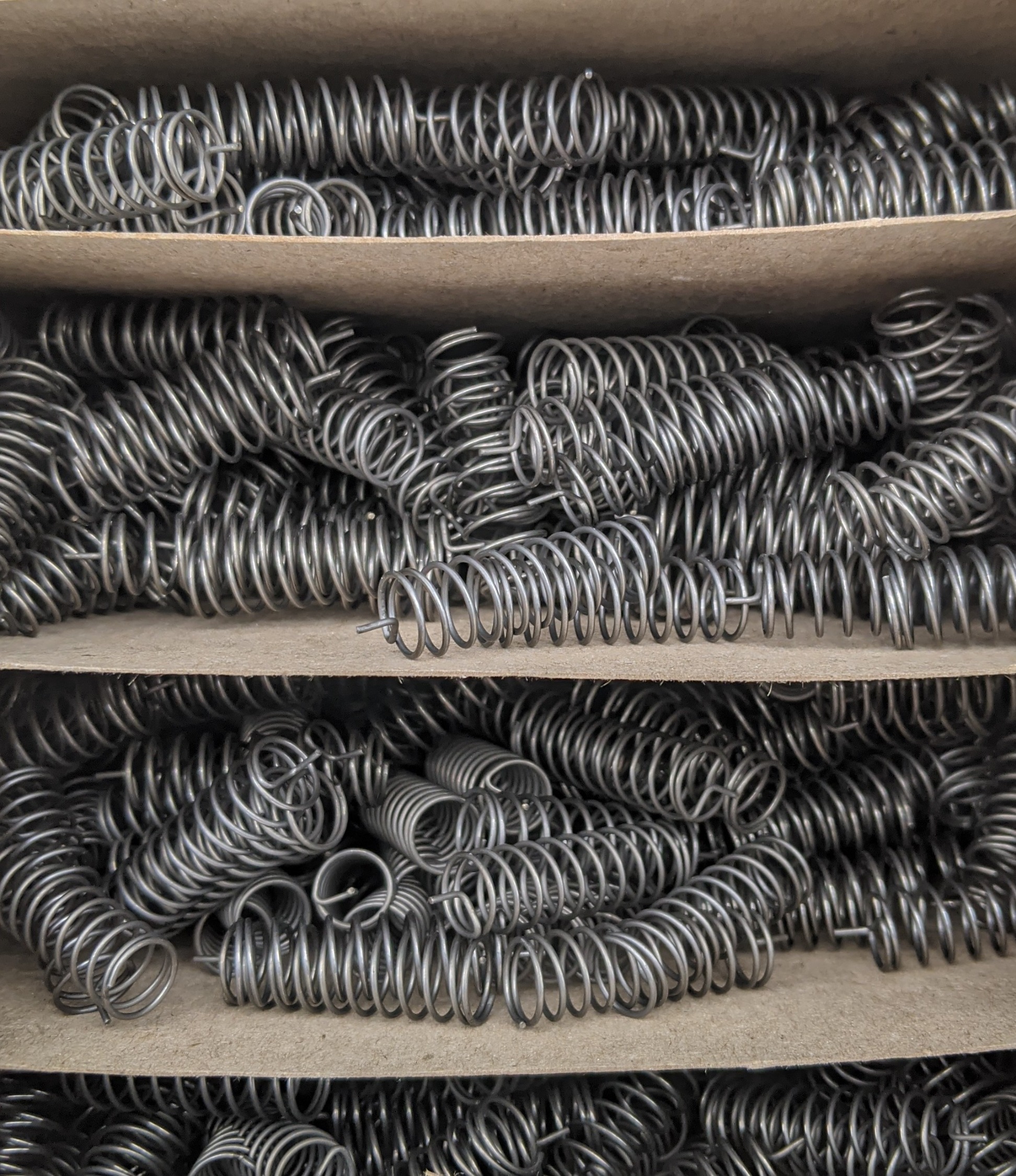Get unique, complex parts easily. No matter your requirements, Chaoyi Spring creates hard-to-produce coil springs and wire forms.
Let us help you create the custom wire form you need, from S-hooks and J-hooks to utility hooks and more.
We work closely with customers across a wide range of industries, helping them design and manufacture made-to-order parts.
Why choose Chaoyi Spring? We prioritize customer-focused collaboration, modern equipment and the latest technology to make your parts per print.
Find the information and guidance you need, from measuring a spring to learning about materials, placing an order and much more.
From the simple act of opening a door to the complex workings of a car engine, torsion springs are ubiquitous in our modern world. These seemingly inconspicuous coiled metal components


From the simple act of opening a door to the complex workings of a car engine, torsion springs are ubiquitous in our modern world. These seemingly inconspicuous coiled metal components are essential for storing and releasing rotational energy, playing a vital role in countless mechanical systems. They are often overlooked, yet their impact on our daily lives is undeniable. This article delves into the fascinating world of torsion springs, exploring their functionality, applications, and the engineering principles that govern their behavior.

A torsion spring, at its core, is a coiled wire designed to store and release rotational energy. Unlike extension or compression springs, which store and release energy along a linear axis, torsion springs store energy by twisting. Imagine a simple door hinge: as you push the door open, the hinge twists, storing energy in the spring. When you release the door, the spring unwinds, pushing the door closed. This is a basic example of how torsion springs work.
The behavior of torsion springs is governed by fundamental physics principles. The amount of energy stored in a torsion spring is proportional to its stiffness (spring constant) and the square of the angle it is twisted. The spring constant itself depends on several factors, including the material of the spring wire, its diameter, and the number of coils. It's crucial to understand these factors when designing or selecting a torsion spring for a particular application.
Torsion springs are available in various configurations to meet different design requirements. Here are a few common types:
The versatility of torsion springs makes them essential components in a wide range of industries and applications, from everyday objects to sophisticated machinery. Here are a few examples:
Choosing the right torsion spring for a specific application requires careful consideration. Key factors to consider include:
Accurate spring design calculations are crucial to ensure optimal performance and longevity. Consulting with experienced spring manufacturers or engineers can provide valuable assistance in selecting the right spring for your application.
Torsion springs offer several advantages over other spring types:
Despite their numerous benefits, torsion springs also present certain challenges:
Proper spring design, material selection, and surface treatments can help mitigate these challenges and ensure the long-term reliability of torsion springs.
As technology advances, so too do the materials and manufacturing processes used to create torsion springs. The future of torsion springs holds exciting possibilities, with innovations like advanced materials, precision manufacturing techniques, and embedded sensors promising even greater efficiency, durability, and customization.
In conclusion, torsion springs are essential components that play a vital role in countless mechanical systems. Their ability to store and release rotational energy makes them invaluable in a wide range of applications. While often overlooked, torsion springs are the unsung heroes of everyday mechanisms, contributing significantly to the smooth functioning of the world around us. As technology continues to evolve, we can expect to see even more innovative applications for these versatile and indispensable components.
Browse some of the custom wire forms and springs that we manufacture. Don’t see what you need? We specialize in made-to-order products that meet your application requirements.
Visit Our GalleryNeed a custom wire form or coil spring? We make it work. Fill out the contact form and a representative will respond within 1 business day. If you have a PDF or CAD file, you can submit to request a quote.